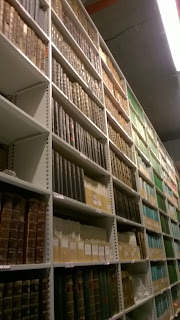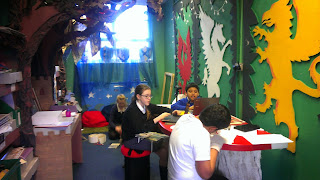Wide Eyed with Archives
Every time I wander through an archive store I get the same thrill from what is around me – a doorway into every imaginable subject, from its early beginnings to the present. Thursday was my last day working for Birmingham Archives & Heritage service. I’ve had an amazing 11 years working as a creative learning officer, an outreach and education worker, an engagement co-ordinator, a collections curator. The names have changed a bit but the core of the work, opening up Birmingham’s archive collections to people was constant throughout and with it the privilege of unfettered access to thousands of documents that tell the history of the City and it’s people.
A week before I left, I accompanied Paganel School on their year 6 trip to London to visit The National Archives, a repeat visit from last year for a school that has it’s own archive and a weekly archive after school club. Those kids know about archives first hand, they have catalogued collections, repackaged photographs and have captured their peers’ experiences of SATs and residentials for the next generation. They have helped preserve, build and capture the life of their school and know their story exists within it.
At the The National Archives we had a rare behind the scenes tour showing us just one of their 5 storage areas housing millions of documents. Our amazing guide wowed the children with tales of Jack the Ripper papers, and Elizabeth I’s signature, but it was the thought that they were also all already in there, listed on the census, (even though they’d need to wait another 90 years to see them) that really excited them. We only had time to look at one original document, a Victorian Child Prisoner’s record, detained for 15 days at age 11 for running away from school. The Paganel children were suitably shocked, not only at the sentence for a child the same age as they are, but at the diet which didn’t include any fruit or vegetables.
They interrogated the photos like old hands, inferring meaning from what they spotted and constructing stories as to how people had come to be in that situation. They used their own experiences from looking at archives and their own experiences as children to imagine the past and draw parallels with now. I noticed those same observation skills later when we walked through London back to Euston and they commented on the busyness of the Capital, the many homeless people we saw, the different coloured buses, landmarks that they’d only seen on the tv before.
Archives open eyes, to what was and has been, to what hasn’t been saved and needs to be and to what’s going on around us and how we fit into it. An endless source of stories and potential to open up the past and to inspire us for the future, outreach officer or school child.




